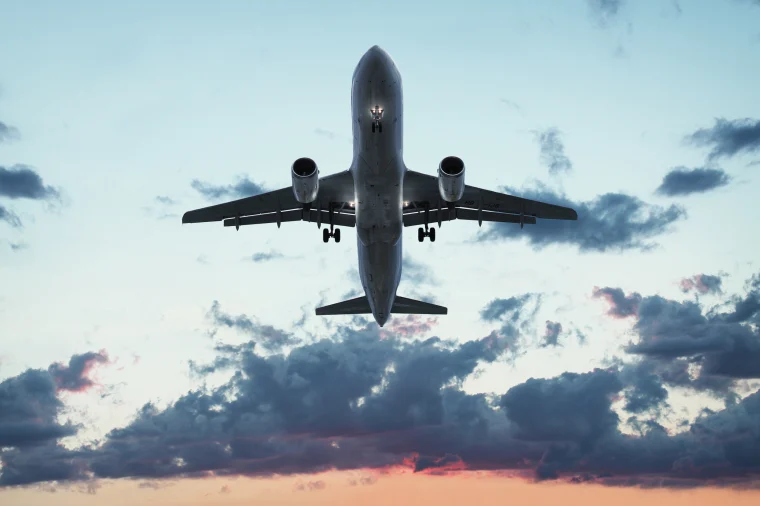
A Perspective on Safety, Efficiency, and Noise Abatement
And Why They Are Inseparable
In 2023, two Southwest Airlines B737s had engines fail immediately after takeoff, resulting in emergency landings. In February 2021, a United B777 engine blew up and rained engine parts down on a residential area near Denver. In January 2020, a Delta B777 engine failed on takeoff, forcing the crew to dump fuel over residential areas of Los Angeles—including five elementary schools. The most famous of all takeoff accidents was the 2009 “Miracle on the Hudson,” when a US Airways A320 lost both engines after a bird strike and glided to a landing in the Hudson River, avoiding any injuries on the ground. Had they been 500 feet lower when they lost the engines, they probably would have crashed into Manhattan or Northern New Jersey. Along with the skill of highly trained and experienced crews, luck was one of the factors for why these incidents did not result in fatalities.
But what do these safety events have to do with noise abatement and what makes them inseparable?
The aviation industry has spent years perfecting operational risk analysis and enhancing safety to levels we never thought possible. With safety improvements we sought out operational efficiencies and the utilization of new technologies. That led to the FAA’s NextGen program that took flight operations and air traffic control efficiency to levels we only dreamed of at the turn of the last century.
But during that journey we forgot about something–we forgot about the people under the changing flight paths that were surprised by new noise “footprints.” We forgot that the same noise “footprints” an aircraft creates on takeoff is the potential debris field after a catastrophic incident on take-off. We forgot about the effects of sleep deprivation from a 02:00 am flight departing over a residential community on a new NextGen route, simply because it saves a minute or two of total flight time.
We forgot to acknowledge that people who bought homes near airports before NextGen did so knowing how the airport operated since it was created. But what they didn’t know, or expect, was how new technology and new routes would change how the same airport would now operate. The aviation industry succeeded in modernization, but inadvertently impacted thousands of families in hundreds of communities who became the unwilling beneficiaries of efficiency—new noise patterns. Ironically, communities now have to listen to the question, “The airport was there first, why did you move next to it?” while the questioner fails to recognize the flight paths were deliberately changed to address the public’s demand to modernize the ATC system.
We need to acknowledge that in our zeal for modernization of our airspace system and better safety and efficiency, we forgot an important element—the impact of noise on the citizens whose airspace we use.
While the industry’s mistake of forgetting about people on the ground is, to some degree, understandable, aviation owes it to citizens to now examine how enhancements can be made to balance safety, noise abatement, and quality of life. Not all noise issues can be resolved, but those that can be addressed should be—and those efforts should be embraced by all aviation stakeholders, especially airport sponsors.
Safety should still come before efficiency. Each flight adds risk to families living in close proximity to all airports. Expediting aircraft departures by turning them sooner, at low altitudes over populated areas to get on course quicker, trades safety for efficiency.
Unfortunately, some airports view community noise complaints as annoyances and respond with a legacy attitude reflecting, “The airport was here first.” We simply must advance our perspective on this issue. At one point in history, we did not think there was anything wrong with coal-fired power plants or dumping toxic waste into rivers and streams. Fortunately, we recognized the fallacies in those positions, so now we need to apply the same thinking to noise.
Harm from noise is real. The potential risk to innocent people and property on the ground is real. The fact that local governments that approved residential zoning near airports now bear a responsibility for addressing the resulting noise impact and risk is real. The fact that NextGen technological improvements changed many historic flight paths that surprised many communities is also real and cannot be ignored.
But for all those realities, there are solutions—but new approaches to finding those answers will be needed. Most significantly, all stakeholders will need to work collaboratively on implementable solutions, accepting that small quick steps are better than big leaps. All stakeholders will need to listen more than they talk—after all, the issue is noise, and we certainly don’t need more. All stakeholders need to resist the urge to “win,” accepting the goal that the answers—all requiring compromises—will be a win for our communities.
Finally, we need to acknowledge that in our zeal for modernization of our airspace system and better safety and efficiency, we forgot an important element—the impact of noise on the citizens whose airspace we use. We need to listen to and consider them as an element of the National Airspace System (NAS), if for no other reason, because they are the taxpayers—and airline customers—who ultimately pay for the system.
Aviation, with its own unique culture, has never failed to find solutions—and we cannot fail now. But to truly succeed we will need to invite and include stakeholders from communities and local governments who are equally committed to finding a balanced way to solve the issues.

County Donegal, Ireland, is called “the forgotten county” due to its location in the far northwest part of Ireland. This article could be described as “Aviation’s Donegal” because it discusses an important element we forgot about in searching for better efficiencies. To find out more about this issue, listen to the Noisy Skies podcast, available wherever you listen to podcasts.